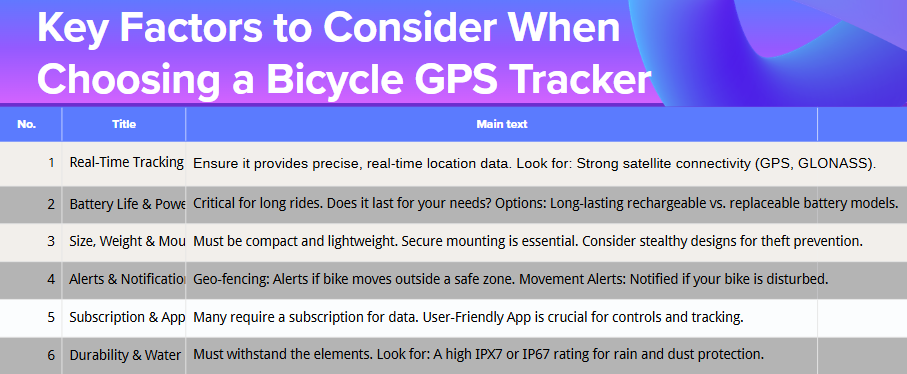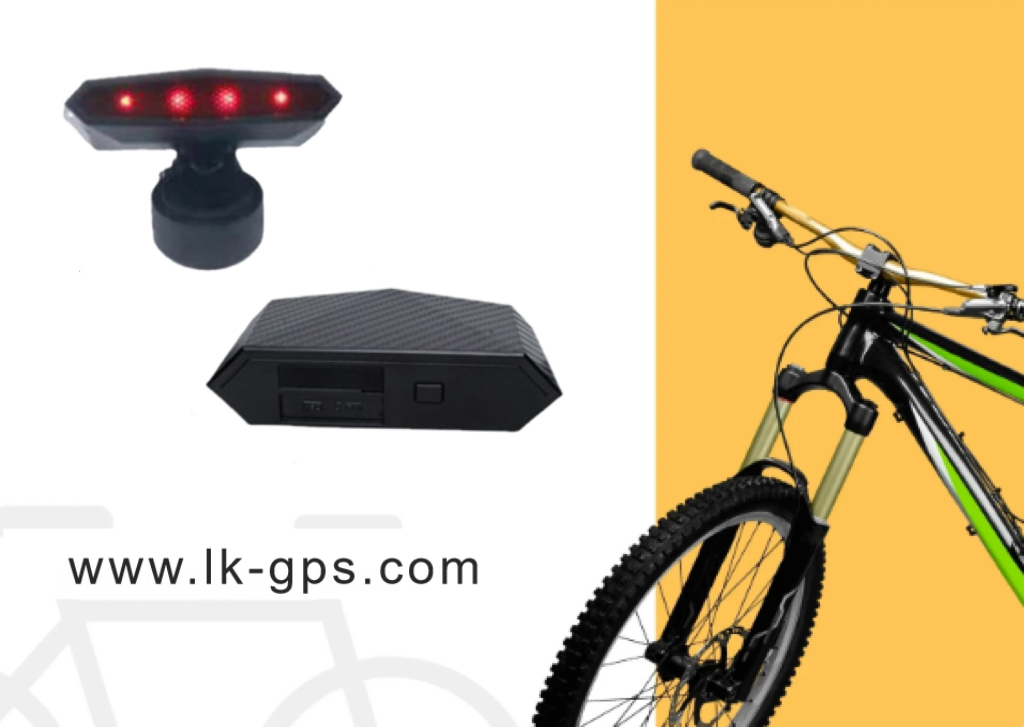

Your bicycle represents freedom, fitness, and a significant investment. Whether you're a daily commuter, a weekend adventurer, or a competitive racer, the thought of it being stolen is a nightmare. This is where a reliable bicycle GPS tracker becomes your most valuable accessory. It’s your digital guardian, offering peace of mind and the power to recover your prized possession.
But with a growing market full of options, how do you choose the right one? The best choice isn't always the most expensive; it's the one that perfectly aligns with your specific needs. Let's dive into the key factors you must evaluate to make an informed decision.
This is the non-negotiable, core function of any bicycle GPS tracker. The primary goal is to see your bike's location on a map, updated in real-time, not just its position from an hour ago. For recovery purposes, every second counts.
What to Look For: Accuracy depends on the hardware's ability to connect to multiple satellite networks. Don't just settle for standard GPS. Look for devices that also tap into GLONASS (Russia's global system) or Galileo (EU's system). This multi-system connectivity ensures faster lock-on times and superior accuracy, even in urban canyons with tall buildings. When you're sourcing tracking hardware, especially when considering bicycle GPS tracking hardware sourcing China, verify the supported satellite constellations. This commitment to precise real-time location updates for bicycles is what separates premium products from the rest.
A tracker is useless with a dead battery. Battery life is arguably the most critical practical consideration. Your needs will vary: a commuter might charge daily, while a tourer needs something that lasts for weeks.
What to Look For: There are two main philosophies. Long-lasting rechargeable batteries offer convenience and can often last from a week to several months on a single charge in power-saving modes. Alternatively, some models use replaceable battery models (like CR2032 coins), allowing you to instantly swap in a fresh cell, ensuring constant uptime. For a long battery life bicycle GPS tracker, scrutinize the specs. Look for models that offer smart sleep modes that conserve power when the bike is stationary but wake up instantly when moved. This efficient power management is a hallmark of sophisticated OEM/ODM bicycle GPS module supplier partnerships.

A tracker that’s bulky, heavy, or poorly mounted will annoy you and, worse, be easily discovered by a thief. The goal is to integrate protection seamlessly into your ride.
What to Look For: The device must be compact and lightweight to not affect your bike's handling or aesthetics. More importantly, it needs a secure mounting solution that prevents it from vibrating loose on rough trails. The ultimate strategy, however, is stealth. The best trackers are designed to be hidden in plain sight—inside the handlebar, under the saddle, within a bottle cage, or even disguised as a standard bike component. This is where working with an innovative bicycle GPS tracker OEM from China can be a advantage, as they can often help integrate the tracker into custom or discreet designs for your brand.
A tracker shouldn't require you to constantly check the app. It should proactively tell you the moment something is wrong. This transforms it from a recovery tool into a prevention tool.
What to Look For: The two most vital alert systems are:
Geo-fencing: This allows you to draw a virtual boundary on the map around a "safe zone" (like your home, office, or gym). If your bike moves outside this zone without your phone being present, you receive an immediate alert. A geofence enabled bicycle tracker is essential for proactive security.
Movement & Impact Alerts: Get an instant push notification to your phone the moment your bike is touched, bumped, or moved, even if it's still within your geo-fence. This can scare off a potential thief before they even get away.
The hardware is only half the product. The companion mobile app is your window to all the data and controls. Furthermore, most cellular-based trackers require a data plan to transmit their location.
What to Look For: The app must be user-friendly, intuitive, and reliable. It should display the location on a clear map, manage alerts, and show battery status effortlessly. Ask about the subscription cost—is it monthly or annual? What does it cover? A transparent private label bicycle GPS tracker supplier China will be upfront about these costs. Remember, the app's quality often reflects the software support of the bike GPS tracker factory in China behind the hardware.

Your bike faces rain, mud, dust, and vibrations. Your tracker must be built to endure these elements. A fragile device is a liability.
What to Look For: The gold standard for electronic protection is the IP (Ingress Protection) rating. For a bicycle GPS tracker, you should absolutely not settle for anything less than IPX6. This means it is completely dust-tight and can be immersed in up to 1 meter of water for 30 minutes . This rating ensures your tracker will survive a torrential downpour, a deep puddle, or a dusty trail without failing.
Choosing the right bicycle GPS tracker is about balancing these six factors against your budget and specific riding habits. There is no one-size-fits-all solution, but by prioritizing real-time accuracy, battery life, stealth, smart alerts, a good app, and rugged durability, you will find a guardian you can trust.
At lk-gps.com, we understand these complexities. We are more than just a supplier; we are a technical partner specializing in high-quality bicycle GPS tracking hardware. We work with clients worldwide, offering expert OEM/ODM services to integrate robust, reliable, and feature-packed tracking solutions into your product line. If you are looking for a bicycle GPS tracker OEM from China that prioritizes quality, innovation, and security, let's talk about how we can build the perfect guardian for your bicycles together.